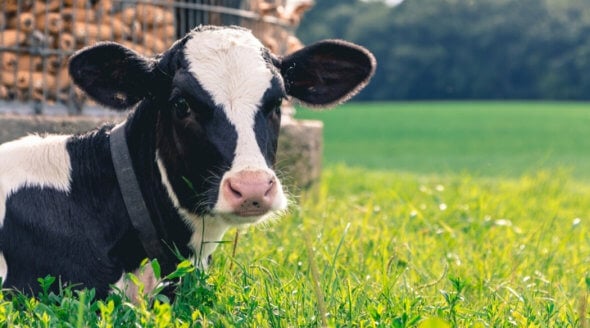Angora: Torture for Rabbits
Angora wool, the soft fur of the angora rabbit, is a material that often goes unnoticed by consumers when they check the label on an item of clothing. But there’s a reason why hundreds of fashion brands have pledged not to sell it after seeing the horror involved in its production.

Screaming in Pain
Angora rabbits are typically kept inside small, filthy, bare cages and face the ordeal of live plucking up to four times a year. During this process, they’re often physically restrained as workers pluck the hair from their sensitive bodies, leaving only the fur on their heads. PETA’s exposé of Chinese fur farms reveals the horrifying screams the rabbits make whilst being plucked, a process they’ll endure repeatedly for two to three years before ultimately being killed.
Ninety per cent of the world’s angora supply comes from farms in China just like these. As rabbits produce a low yield of fur and longer hairs are more valuable, live plucking is rife in the industry and is the most common method of obtaining angora.

‘Humane’ Angora Is a Myth
No matter where it’s sourced, there’s no such thing as humane angora. Whilst the vast majority of the material originates in China, so-called “high-welfare” farms in other countries have tried to persuade retailers and consumers that the conditions in their facilities are far better for rabbits.
An investigation by One Voice into French angora farms revealed the disturbing truth. The group’s footage shows that rabbits were tied to tables while their fur was ripped from their skin. Workers also twisted and pulled the animals into unnatural positions in order to pluck the hair from the most sensitive areas of their bodies.
On some smaller farms, “clipping” or “shearing” may be used to remove the fur, but these methods are considered to produce a lower-quality fibre and are not typical on commercial-scale operations. Even if rabbits are sheared for their fur rather than plucked, they still face a lonely life inside a small, barren cage and will be slaughtered far short of their natural lifespan.
What You Can Do
The global angora industry was decimated by the release of PETA’s exposé of Chinese farms, and hundreds of major fashion companies pledged to stop using the wool in their collections. However, some designers and retailers have continued to sell it, so consumers need to be vigilant when shopping for clothing and accessories with a fluffy or wool-like appearance.

If you see angora on the shelves, you can take action by letting the company know how it’s produced and by voicing your refusal to buy it.
All wool – regardless of whether it’s labelled “angora”, “lambswool”, “cashmere”, “mohair”, “shahtoosh”, “alpaca”, “pashmina”, or “Mongolian” – is cruelly obtained, as animals exploited by the fashion industry to make a profit are almost without exception mistreated and killed for their coats.
Thankfully, there are plenty of designers, high-street retailers, and vegan brands offering alternatives to wool and other animal-derived materials. When you’re out shopping, please choose plant-derived options such as cotton and linen.
FACTBOX
- Rabbits are gentle, socially complex, and intelligent animals with individual personalities.
- Male angora rabbits are routinely killed soon after birth, because their fur yield is lower than females’, making them unprofitable to the angora industry.
- More than 425+ brands have banned angora after hearing from PETA entities.
- An estimated 50 million rabbits are bred in China every year to be exploited by the angora industry.
- Angora rabbits’ natural lifespan is around 12 years, but on farms, they’re often killed after two to three once their fur yield declines.
- In their native habitat, rabbits live in scrupulously clean burrows and spend their time foraging for fresh, leafy foods as well as interacting with members of their warren.

